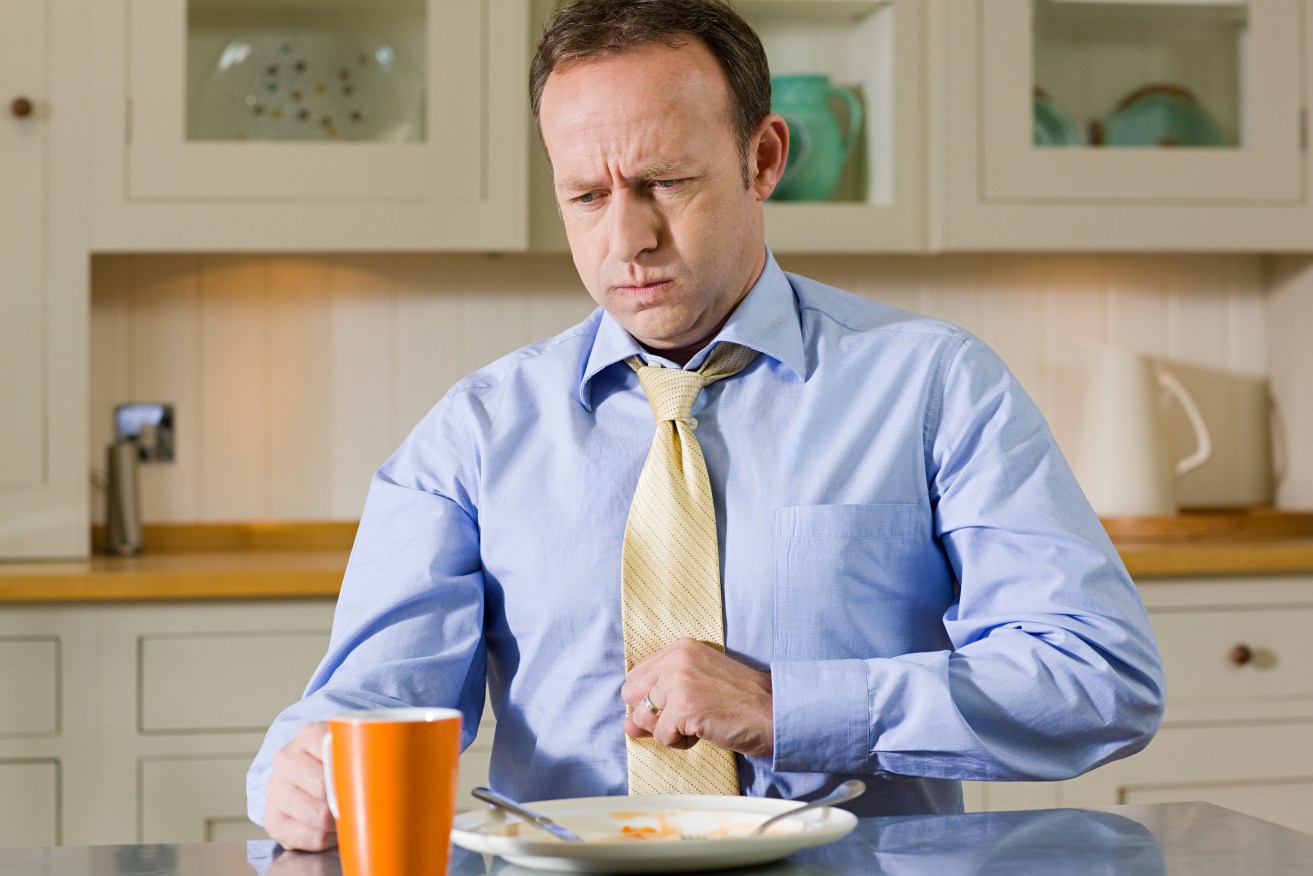Heartburn: Sometimes antacids aren’t the answer


Occasional heartburn isn't serious for most people. When it's happening a couple of times a week, then it's time to talk with your doctor. Photo: Getty
The first plate of food disappeared like laundry down a chute. Halfway through the second plate there was a mighty burp that inspired a choir of rebuke.
More painful and vaguely alarming is that swollen feeling of burning behind the breastbone. Bend over or lie down and it feels worse.
Thank goodness you’ve been through this before, because otherwise you’d be wondering if this is a heart attack.
Good old heartburn. Known also as indigestion.
What happens with heartburn?
When we swallow food, it travels down the oesophagus, pushed along by a wave-like motion called peristalsis. (Peristalsis functions to push food all the way through the digestive system until it exits as waste).
Just above the entrance to the stomach is a circle of muscle called the oesophageal sphincter, which remains closed most of the time, preventing food and stomach acid from leaving the stomach.
The arrival of food at the bottom of the oesophagus causes this muscle to relax and allow the chewed foods to enter the stomach.
Gravity plays a part here
This is why we’re meant to eat sitting up, to allow gravity to do its work, and to protect against backwash.
It seems almost Victorian to say so, but try sitting up straight and take a dignified moment between swallowing and taking another bite.
If you’re lying down while eating, because you’re ill in bed or reclined on the couch watching TV, you’re likely to have stomach contents spill backwards through the sphincter and cause the oesophagus to be mildly burnt by acid.
Eating too much and too quickly (hoovering instead of chewing and swallowing in an orderly fashion) essentially confuses the oesophageal sphincter and again stomach contents, including digestive acid, will travel backwards up the food pipe.
This is called acid reflux.
This happens to all us now and then. As an occasional event, there’s no great harm done.
How to treat heartburn
Most people when having an occasional bout of heartburn probably suffer through it. People who keep non-prescription antacids on hand are probably suffering more than an occasional bout (and we’ll get back to that).
Antacids work by neutralising the acid that is coating your oesophagus.
Home remedies include:
- Sipping ginger tea because it’s an alkaline (counters the acid causing your injury) and also an anti-inflammatory, which eases the irritation
- Sipping lemon tea with honey. Yes, lemon juice is acidic, but when mixed with honey the tea has an alkalising effect, again neutralising the stomach acid
- Milk. The fats in full cream milk actually aggravate acid reflux. But non-fat milk acts as a temporary buffer and provides immediate relief of heartburn symptoms.
Frequent heartburn
If you’re suffering heartburn twice a week or more then you’ve potentially moved from having a functional accident (spilling that acid) to having a disorder, gastro-oesophageal reflux disease (GORD).]
Nearly 12 per cent of Australians have been diagnosed with GORD, the Royal College of General Practitioners reported In 2015. But another 8 per cent are thought to have the disease but to be undiagnosed.
So that’s 20 per cent of Australians who are routinely reaching for the antacids. And by routinely I mean up to several times a day.
Over time, these people find the antacids no longer provide relief.
The reason is simple. You’ve damaged your oesophagus through too much acid spillage.
There are four possibilities explanations of what might be going on:
- Oesophagitis – inflammation of the oesophagus
- Oesophageal ulcers, which develop when this inflammation is ignored and the lining of the oesophagus is damaged. These ulcers can bleed, cause pain and make swallowing difficult
- Oesophageal stricture or narrowing. This usually occurs when those ulcers aren’t treated and scar tissue builds up. A stricture may require surgery to remove scar tissue and restore the width of the oesophagus
- Barrett’s oesophagus – a premalignant condition of the lower lining of the oesophagus, and a risk factor for cancer of the lower oesophagus. If you have experienced reflux for five years or more, talk to your doctor about testing for Barret’s oesophagus.
Even if heartburn hits you twice a week, it’s time to talk with your doctor about being tested for gastro-oesophageal reflux disease – the sooner, the better.
Increased risk factors
The following factors can make gastro-oesophageal reflux disease worse:
- Obesity
- Bulging of the top of the stomach up above the diaphragm (hiatal hernia)
- Pregnancy
- Connective tissue disorders, such as scleroderma
- Delayed stomach emptying.
Aggravating factors include:
- Smoking
- Eating large meals or eating late at night
- Eating foods that serve as triggers, such as fatty or fried foods
- Alcohol or coffee
- Taking aspirin.
Also, note that the symptoms of a heart attack and heartburn can look the same.
To read more about gastro-oesophageal reflux disease, see here.








